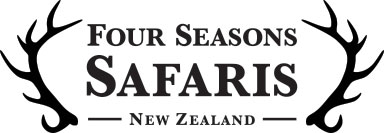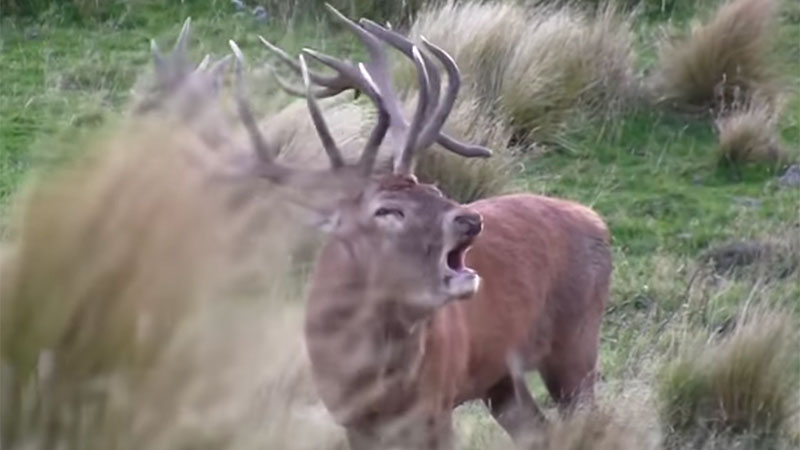Red Stag “Roar”
This time of the year in New Zealand is the beginning of fall, and the stags that roam the hills are coming into the most exciting time of the year, the “rut.” The “rut”, or otherwise known as the “roar” for the red deer starts in the month of March and goes through April in New Zealand. The lion like roar the red stags make, shakes the ground and echo’s up and down valleys. As the weather cools down and the days get shorter, the hinds (female red deer) start coming into estrus, and the estrus cycle is what drives all this excitement. The females start looking for the right male (stag) they want to be bred by, and every male wants to breed as many females as he can mount. Each female is desperate to be bred, and each male is desperate to breed. Red Deer are herd animals and the dominant stags try and round up as many hinds as the can keep track of. This is an intense time in the mountains where these deer live.
There are many factors that influence the start of a hind’s estrus cycle, and the circumstances depend a lot on the body fat percentage. By design a female won’t come into estrus until her body is healthy enough to carry a calf. A wet spring usually generates a plentiful summer of food for the deer, which will produce a timely estrus cycle come Autumn/fall. It is a 9-month cycle from conception to birth for these deer, and the earlier a female can be bred means the longer a calf has to live and grow before its first winter. Once a female comes to the right body fat percentage, and weather temperatures start dropping, her estrus cycle will begin. When this occurs, a female lets off specific pheromones that are picked up by the males. This scent is a major factor that lets the males know it is breeding time. The instinct to breed as many females as possible creates a crazed mindset for these stags to do what they were born to do: fight and breed.
Both the males and females gear up for this time of year starting in the spring. Females work on getting their body fat up to be prepared to hold a calf, and the males feed heavily, to grow their antlers and body size for the battle that they will inevitably face. The stags begin to break off from their “bachelor” groups at the end of summer; and start preparing themselves for the roar by rubbing the velvet off their antlers, sharpening the tips for battle and locating nearby females. The roar is an exhausting time for the stags with little time to feed. They are in constant movement herding females, fighting with other stags, and chasing off the younger stags. It is a way of life for these deer and an amazing experience to watch and be in the midst of.
Red stags are the most vocal deer of all animals in the deer family and are very aggressive by nature. In general, red deer communicate with a series of mews and roars. The hinds and calves communicate with a series of different mews, and stags communicate with different mews and roars. A roar is lion – like sound that is unique to each stag. It is a stag’s way of advertising themselves to the hinds, and a way to intimidate other stags.
The stags roar to let the females know where they are and, what they want from them, and to let other stags know: “I am the man on this ridge!” Stags are very aggressive and will often fight to the death. A battle will often come when two stags of similar size and aggression will not back down. These intense battles can result in broken antlers, injured bodies, and sometimes death. The victor controls that area and has won the right to breed the females, and thus, his blood line will be the next year’s offspring.

